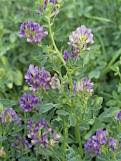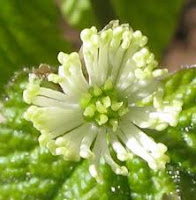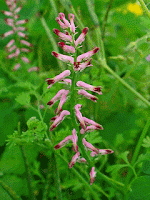Silverweed or goosegrass is native to Europe including the British Isles , North America and Asia . It is also known by the Latin name, Argentina Argentina
 It grows up to about a metre long and can grow up to a foot high, and creeps along the ground rapidly with its tendrils. The five petalled yellow flowers are pretty and the plant is cultivated for ground cover. It seems that the edible roots of the cultivated plants are thicker than those of the straggly ones from the wild plants, but these have been eaten in times of scarcity and are said to have a nutty flavour, resembling that of parsnips or chestnuts. Silverweed is a member of the Rosaceae family of plant making it a distant relative of plum, peach and apricot trees as well as the rose. The roots can be eaten raw, boiled or roasted and are starchy in texture.
It grows up to about a metre long and can grow up to a foot high, and creeps along the ground rapidly with its tendrils. The five petalled yellow flowers are pretty and the plant is cultivated for ground cover. It seems that the edible roots of the cultivated plants are thicker than those of the straggly ones from the wild plants, but these have been eaten in times of scarcity and are said to have a nutty flavour, resembling that of parsnips or chestnuts. Silverweed is a member of the Rosaceae family of plant making it a distant relative of plum, peach and apricot trees as well as the rose. The roots can be eaten raw, boiled or roasted and are starchy in texture. Its Latin name Potentilla comes from potens meaning powerful and anser meaning goose in Latin. In Europe the whole plant is used medicinally and has been a specific treatment for jaundice. It is also regarded as a good diuretic for dispersing gravel in the organs.
A strong infusion of the whole herb has been used as a lotion to stop piles bleeding (1 oz to 1 pint of boiling water), while the tisane made from 2 teaspoons of the chopped fresh herb is used with a pint of boiling water and left to steep for 15 minutes before straining and drinking. This is enough liquid to be taken three times in a day. You shouldn’t take it all at once. This is used for jaundice and gravel as well as for stomach cramps for which is it mainly regarded as effective. A poultice of the warmed leaves can also be applied externally to the painful parts of the body as the plant acts as a mild pain-reliever. You can take up to 3 ounces of the fresh herb in one day safely.
A strong decoction has been used for mouth ulcers, lose teeth, bleeding gums and so on. Native Americans used the roots in a tisane to speed up labour in childbirth and as an antispasmodic for diarrhoea. It is mainly regarded as an astringent herb and good for a tonic.
In boiled milk or water the fresh herb has been used for tetanus in the past and distilled water from the herb has been used for the skin and sunburn, to relieve redness and to get rid of freckles, pimples and other skin blemishes.
The ancient physicians of Myddfai recommended it with other herbs for women who could not have children. Here is their remedy for female sterility:
 “ A sterile woman may have a potion prepared for her by means of the following herbs, viz:—St. John's wort, yew, agrimony, amphibious persicaria, creeping cinque foil, mountain club moss, orpine and pimpernel, taking an emetic in addition.”
“ A sterile woman may have a potion prepared for her by means of the following herbs, viz:—St. John's wort, yew, agrimony, amphibious persicaria, creeping cinque foil, mountain club moss, orpine and pimpernel, taking an emetic in addition.” Writing in the 17th century Nicholas Culpeper had this to say of the herb:-
“Government and virtues. This is a plant under Venus, and deserves to be much more known in medicine than it is. It is of the nature of tansy. The leaves are mildly astringent: dried, and given in powder, they will frequently effect a cure in agues and intermittents (fevers); the usual dose is a mat-spoonful of the powder every three or four hours betwixt the fits. The roots are more astringent than the leaves, and may be given in powder in doses of a scruple or more in obstinate purgings, attended with bloody stools, and immoderate menstrual discharges. A strong infusion of the leaves sops the immoderate bleeding of the piles; and, sweetened with a little honey, it is an excellent gargle for sore throats.”



















































